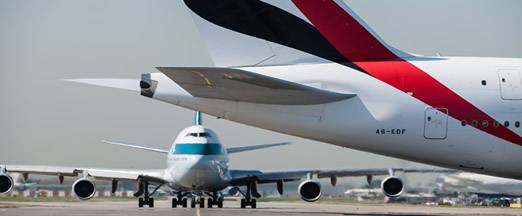Can ATC really create more value at an airport?
30 October 2013On the beautiful island of Jersey the speed limit is only 40mph, so buying a Ferrari 458 to drive around its twisting narrow roads may not be the most satisfying investment.
Equally, building a new airport with eight runways without appreciating the constraints of the surrounding infrastructure – be it roads, rails or airspace – may leave you disappointed at the end result. Worse still, as an airport investor, it may leave you significantly out of pocket if airlines don’t rush to operate from it.
With aviation in many parts of the world showing encouraging signs of growth, there is once again pressure to expand or build new airports theoretically capable of handling 100 aircraft movements an hour. However, in some cases the surrounding infrastructure may only be capable of half that, meaning the airport can’t be used to its full potential.
Is this down to poor planning? Not entirely, but whilst the road and rail aspects are considered early in the building of a new airport, the air traffic management and airspace design elements are sometimes pushed towards the very end.
So, I’d like to demonstrate how air traffic management and airspace design can play a key role across the whole airport development lifecycle.
1. Masterplanning
You wouldn’t build a motorway that connects to a dirt track, so a consideration of how your new airport will fit into the surrounding airspace is essential, especially if there are other airports in close proximity. Understanding and “designing-in” the airspace capacity to support the kind of airport to be built is fundamental here. The masterplanning process can’t just stop at the boundary fence – it needs to go beyond it, both on the ground and especially in the air. This was recognised by Dubai Airports as a key consideration for the new Al Maktoum Airport, and NATS worked collaboratively with ATC, airlines and the military to produce an airspace design that could be integrated with existing operations, while ensuring civil and military operations were safely separated.

Dubai Airport by elmar bajora via Flickr
2. Detailed design
The success of the air traffic control operation is down to the skill of the controllers in the tower, but it starts with the design and layout of the airport. By working with ATC, airport designers can optimise the position of taxiways, runway exits and stands in order to create a safe and efficient environment that shaves valuable seconds off runway occupancy times and minutes between push back and take off. If you can do that for every flight it adds up to millions of dollars in fuel and kilogrammes of emission savings to airlines, and reduced delays for passengers. In Hong Kong, NATS is working with a number of airport designers to ensure exactly this outcome is achieved for the proposed third runway.
3. Construction and fit out
By building the operational consideration into the design, we can make sure the equipment meets the airport requirement for value and capacity. By relating the technology back to the original design objectives this will inform everything from the design and location of the airport buildings to the engineering that underpins the operation. Our recent work with Manchester Airport on its new control tower is a good example here. We were able to work with the operator and suppliers to ensure all the airfield equipment would maximise ATC efficiency in a way that an equipment supplier alone couldn’t. This also enabled us to build and demonstrate the safety case to the regulatory authorities.
4. Transition and on-going operations
This is a key risk area for any project and is all about getting the airport ready to operate. The successful transition to the new tower at London Heathrow involved many hours of planning, simulation, and airspace design, not to mention the intensive training of the ATC and engineering staff. Once you get to this stage, having someone with experience in successful delivery is key to ensuring you have a good and safe transition to day one and then a swift acceleration to full capacity. At Heathrow, our approach to transition resulted in full capacity being achieved in less than 18 hours from transfer of operation.
In my view, far from just being just “the people in the tower”, air traffic control is at the heart of an airport. It can help set the tone for the entire operation and can make an airport either poor or excellent. But that influence begins before the first drop of concrete is poured, not just once the airport opens.
Comments
Please respect our commenting policy and guidelines when posting on this website.




